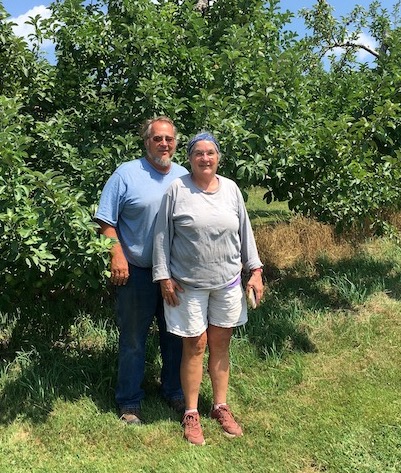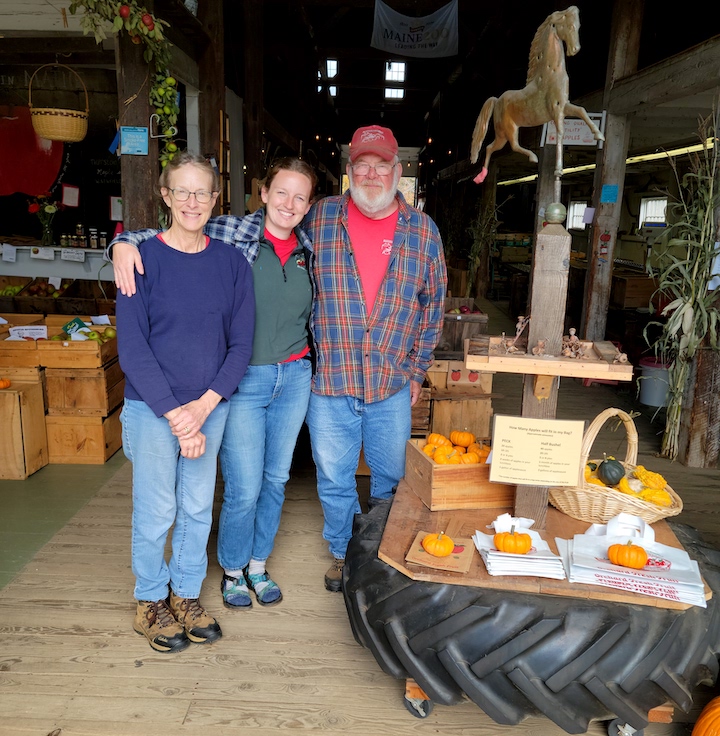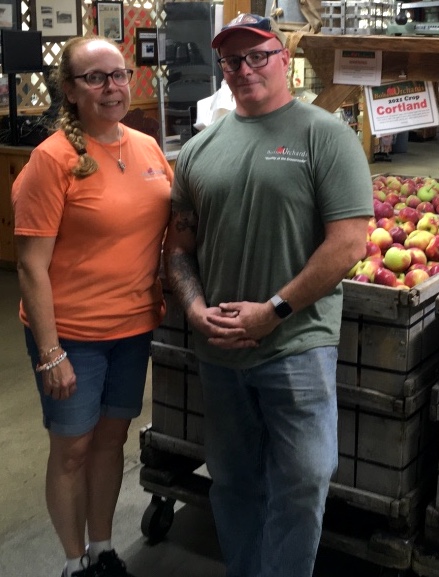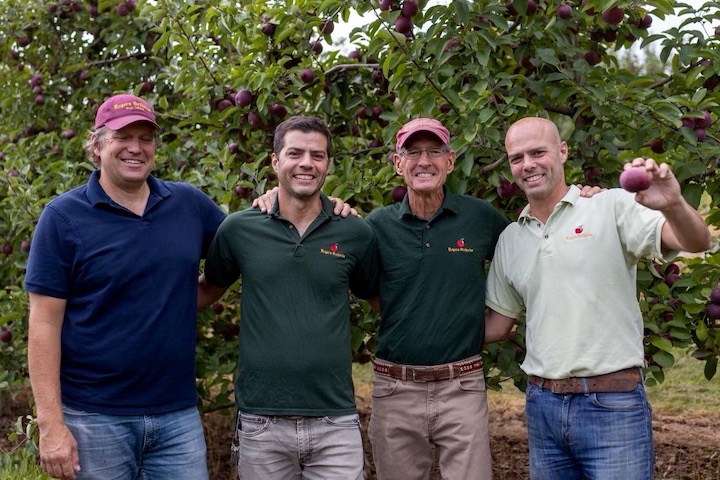
NEW ENGLAND APPLE GROWERS can sometimes seem a pessimistic lot. No matter what time of year you talk to them, their outlook veers from cautious to gloom and doom.
Too much cloud cover during spring bloom. Frost in May, moths in June.
Too many apples on the trees, or too few.
Hail in July followed by a dry August, then a deluge during September weekends, when the crop is ready to be picked.
Some of this pessimism is well founded. A lot can go wrong in an apple orchard between April and October, and the threats are so outsized that they are beyond the control of their human cultivators.
New England’s apple growers face more competition than ever, from other apple-growing regions of the world, from other fruits new to American consumers or that were once available only in season, and from snack foods that are full of sugar, preservatives, and empty calories but have millions of advertising dollars promoting them.
The bigger and more unpredictable challenges are with nature. The size of even a small apple orchard thwarts efforts to protect it from random occurrences of frost or hail damage, and the trees are exposed to the elements year-round.
Apples are vulnerable to drought or excessive rain, high winds, ice storms, and sub-zero temperatures.
* * *

TIMING IS EVERYTHING in the orchard. Extended cloud cover during spring bloom can ruin a crop before it begins, keeping the honeybees from their critical work of pollination.
Cloud cover during a summer heat wave can reduce the occurrence and severity of sunburn (as harmful to apples as humans).
Cloud cover during the fresh harvest, if accompanied by rain, keeps the pick-your-own crowds from the orchard as assuredly as it deters the honeybees in spring.
When the elements align favorably for four seasons, the resulting apple crop becomes the object of desire of nearly every living thing, bacteria and bugs, deer and rodents, as well as the humans for which they are intended.
Given the sheer number and size of the potential threats to the apple crop, the grower’s seeming pessimism is merely an acknowledgment of the fact that their best efforts can be undone at a moment’s notice, without time or the means to prevent it.
With proper skill on the right soil in the appropriate climate, maintaining ordered rows of coiffed trees within nature’s chaos so people can dine on their fruit is possible, but only if the elements cooperate.
Yet despite the uncertainties, apple growers of all ages across most of the United States continue to embrace the eternal challenge of translating sun, rain, and soil into flavorful, nutritious fruit.
We all must eat; what could be nobler than growing good food?
* * *

GROWING APPLES requires a marriage of the poetic and pragmatic. There is artistry in the sculpting of an orchard, a blend of the wild and domesticated. The sculpture is never done and ever changing: the harmony of the orchard’s neat rows requires constant effort to maintain against the forces of nature.
The orchard’s beauty unfolds by degrees and in stages with the seasons, from spring’s pale pink blooms through the reds, greens, oranges, and golds of summer and autumn, to winter’s bold, stark silhouettes.
Apples fill a need in the stomach and the soul.
* * *
AN INTIMATE RELATIONSHIP with the physical world informs apple growers’ optimism. There is trust in the annual cycle of seasons: they may sometimes disappoint, but they never fail.
No matter how much hail damage there was a year ago, regardless of the fall weekends lost to rain, there is always hope for the next harvest.

Apple growers are sustained by the knowledge that no two seasons are alike, and they believe in what they do. They know from experience that if it cannot get much worse, it is going to get better.
There remains something deeply compelling about growing and eating apples in New England that taps into our imaginations and elicits great passion among those who choose it as their life’s work.
— From the introduction to America’s Apple (Brook Hollow Press), by Russell Steven Powell
* * *
LOOKING FOR A GOOD APPLE PIE recipe? There are several to choose from in our Recipes section, like the one below for Grandmother’s Famous Baldwin Apple Pie from Joanne DiNardo of Sholan Farms, Leominster, Massachusetts.
Baldwin is an excellent pie apple, but almost any apple can be used in a pie, like Cortland, Golden Delicious, or Mutsu.
Many cooks prefer a mix. We’ll be using McIntosh, Rome, and Spencer in ours because that’s what we have on hand.
Happy Thanksgiving!



Grandmother’s Famous Baldwin Apple Pie
From Joanne M DiNardo, President, Friends of Sholan Farms, Leominster, Massachusetts
Preheat oven 425°F
Mix together in large bowl:
10 New England apples, sliced thin
1/4 c apple cider
fresh lemon zest
2 T lemon juice
2 T vanilla extract
1/4 c cornstarch or flour
1/2 t salt
1-1/2 t cinnamon
1 t apple pie spice
1/2 c brown sugar
1/2 c white sugar
Roll out pastry crusts and fill bottom crust with apple mixture. Dot with a few pats of butter. Cover with top crust, add vents. Brush top with milk and sprinkle with coarse sugar (optional).
Bake 15 minutes, then reduce heat to 375°F. Bake 45-55 minutes more, or until the crust is brown and filling is bubbly.
2 Comments
Larry Dean
I love seeing these New England apple growers. It’s great fun to see the obvious pride they take in their important work.
Russell Powell
Many thanks! Our apple growers are some of our best environmental stewards. It has been an honor to work with them!